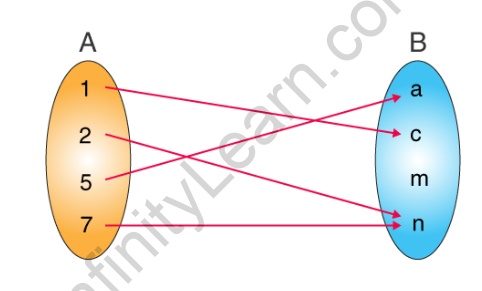Table of Contents
Relation and Types of Relations are important topics in set theory in mathematics. A relation is a connection between two or more sets’ elements. The Roster or Set-builder methods can be used to represent a relation. A relationship describes the path of connection between two things or objects. In mathematics, sets, relations, and functions are all interconnected.
Relations define the operations that can be performed on sets. There are several types of relations, including empty relations, universal relations, identity relations, reflexive, transitive, symmetric, and equivalence relations. In this article, we will go over all of the different types of relationships and how they work with examples.
The cartesian product of two sets is described by a relation. The Cartesian product of two sets A and B, such that a ∈A and b∈B are equal to the collection of all order pairs (a,b). Every element of one set is mapped to one or more elements of the other set, according to the relationship. In terms of relationships, we can say that for each input, there are one or more outputs. The function is a special relationship in which one set’s elements are mapped to only one set’s element. In mathematics, a relation is a relationship between two different sets of information. If two sets are considered, the relationship between them will be established if the elements of two or more non-empty sets are connected.

Types of Relations
There are eight major types of relationships, which are as follows:
- Empty Relation
If an element of a set is not mapped with another set or with itself, the relation is said to be empty. As a result, an empty relation is also known as a void relation.
- Universal Relation
A universal (or full) relation is one in which every element of a set is related to each other. Consider the set A = {a, b, c}. R = {x, y} will now be one of the universal relations, where |x – y| ≥ 0. In terms of universality, R = A × A
- Identity Relation
An identity relation is one in which all of the elements are related to each other. “I” generally denotes a relationship of identity.
- Inverse Relation
If a set of elements contains the inverse pairs of another set, the relation is known as an inverse relation.
- Reflexive Relation
If all of the elements of a set are mapped to it, the relation is said to be reflexive.
- Symmetric Relation
A relation is said to be symmetric if it contains both the ordered pair of a set and the reverse ordered pair.
- Transitive Relation
In the case of a transitive relation, if (x, y) ∈ R, (y, z) ∈ R,, then (x, z) ∈ R. When describing a transitive relationship.
- Equivalence Relation
If a relationship is reflexive, transitive, and symmetric, it is said to be equivalence. Equivalence relations exist between universal and identity relations.
FAQs
Are all functions connected?
A function is a type of object interrelationship. Furthermore, a function defines a set of finite lists of objects, one for each possible combination of arguments. Furthermore, in the world of discourse, a relation is another type of interrelationship between objects. Furthermore, function and relation are both defined as a collection of lists. And every relation is a function, but not every function is a relation.
What are the various types of relationships?
The various types of relations are universal, empty, identity, inverse, reflexive, transitive, symmetric, and equivalence relations.

